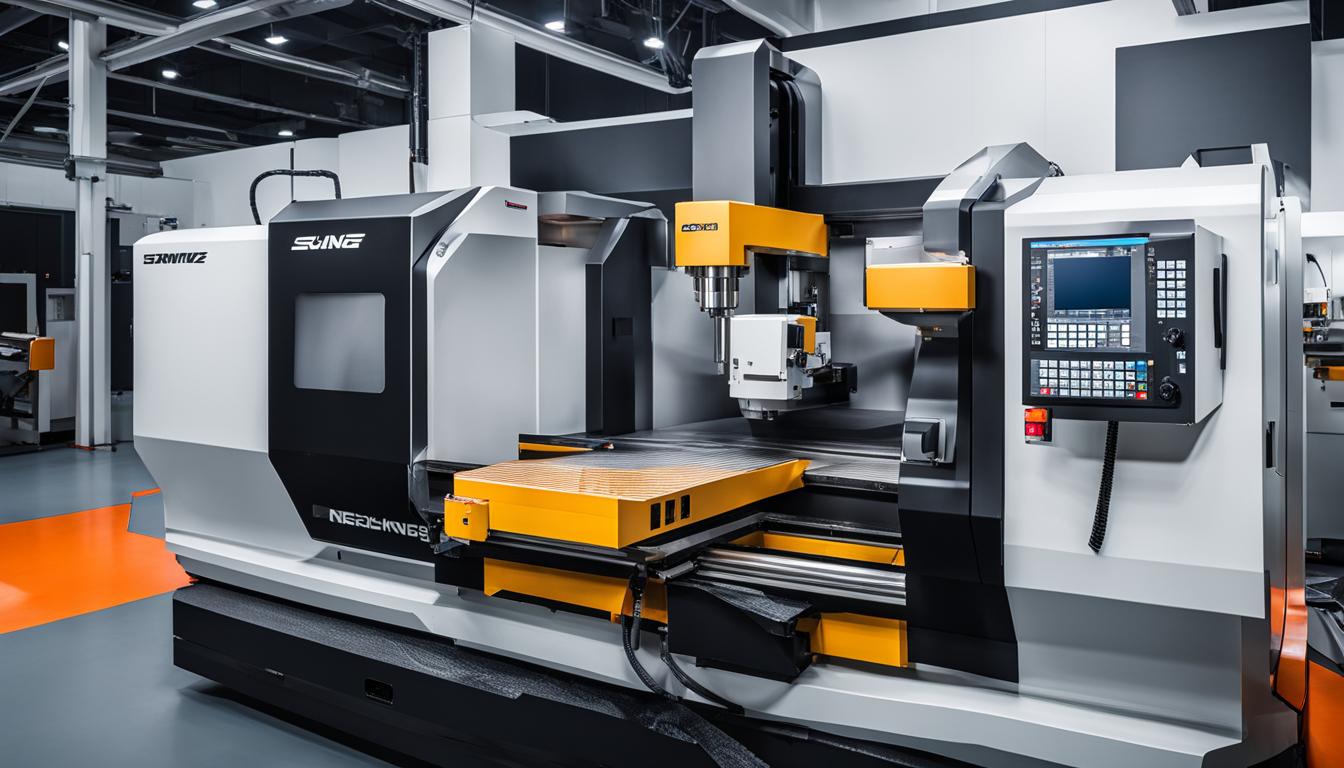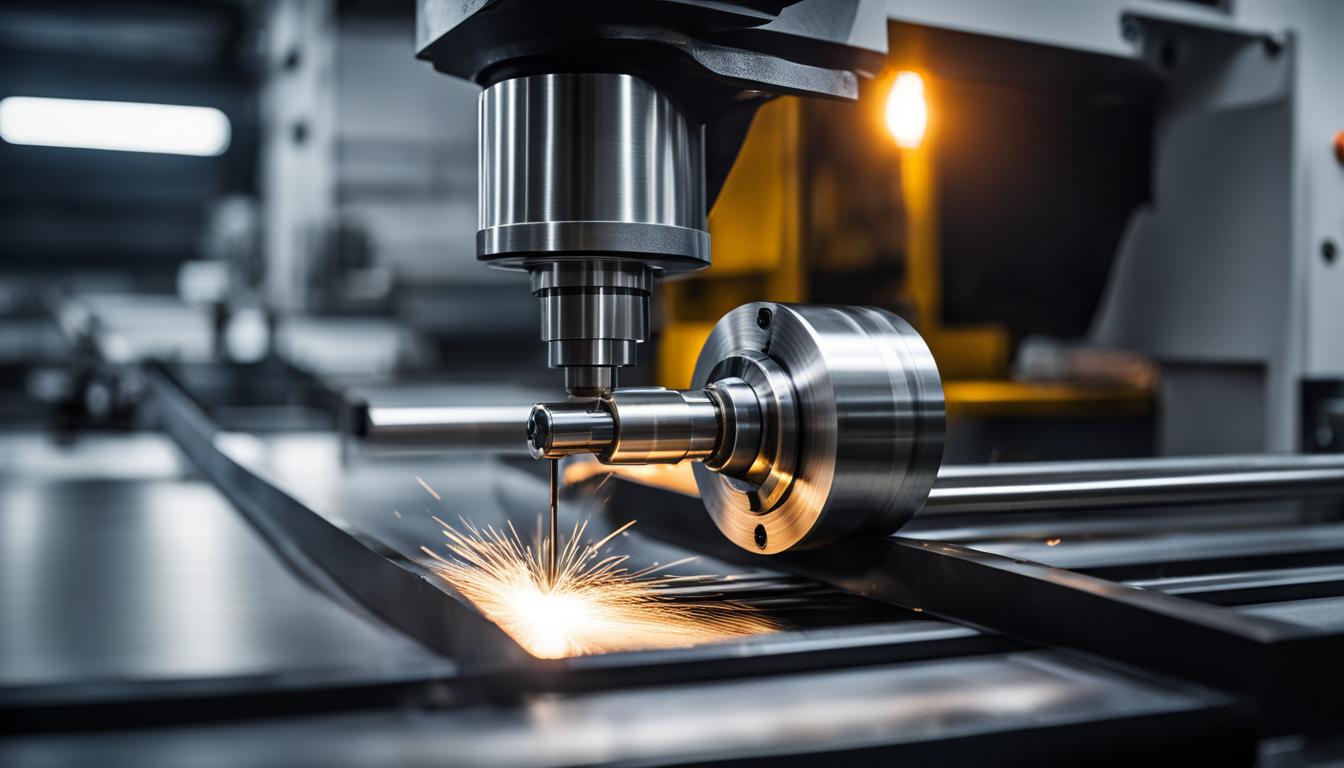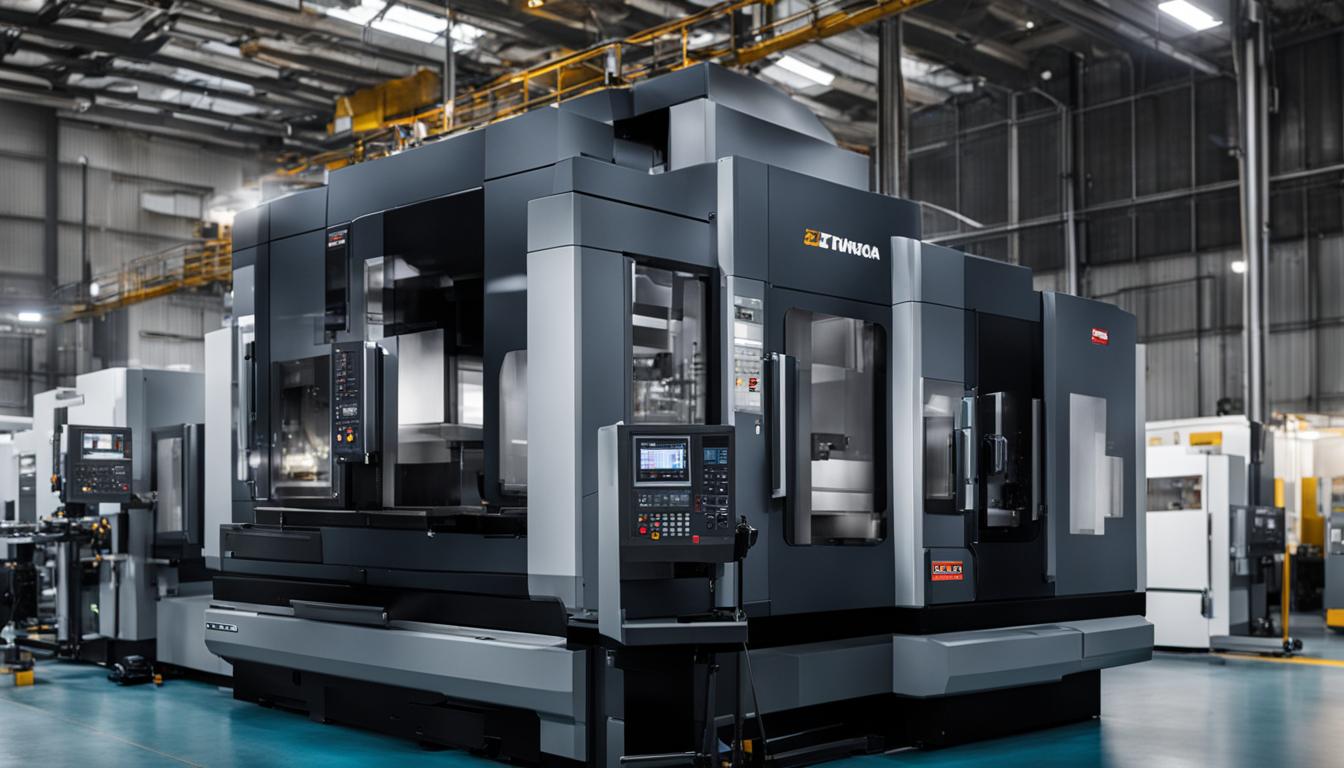The primary difference between CNC turning centers and CNC lathes lies in their capabilities and complexity. CNC turning centers are more advanced machines that incorporate additional features beyond basic turning operations. While both machines use computer numerical control (CNC) technology to perform rotational cutting operations on workpieces, turning centers typically include live tooling, multiple axes of motion, and the ability to perform milling and drilling operations in addition to turning. This multi-functionality allows turning centers to complete complex parts in a single setup, reducing production time and improving accuracy.
CNC lathes, on the other hand, are generally simpler machines focused primarily on turning operations, such as facing, boring, and thread cutting. They may have fewer axes of motion and lack the ability to perform milling or off-center operations. CNC lathes are often more cost-effective for straightforward turning tasks, while turning centers offer greater versatility and are better suited for producing complex parts that require multiple machining processes. The choice between a CNC turning center and a CNC lathe depends on the specific manufacturing requirements, production volume, and complexity of the parts being produced.
- CNC turning centers and CNC lathes are not the same, despite their similarities.
- Turning centers are an upgraded version of lathes with advanced features and capabilities.
- Lathes are simpler and more suitable for toolrooms, designers, and low production requirements.
- Turning centers have higher efficiency, automated tool changing, and multi-axis capabilities.
- Choosing the right machine depends on the project’s requirements and production needs.
What is a CNC Lathe Machine?
A CNC lathe machine is a traditional lathe that has been upgraded with computer numerical control (CNC). It allows for repetitive production and multi-axis control, enabling the creation of angled and radiused parts. CNC lathes are replacing manual lathes due to their ease of setup and operation. They can be controlled by coded files or positioned manually, making them suitable for toolrooms, designers, and lower production requirements.
CNC lathe machines offer several advantages over manual lathes. With CNC technology, operators can program precise movements and automate repetitive tasks, resulting in increased efficiency and accuracy. Additionally, CNC lathes can perform complex operations such as thread cutting, contouring, and facing, making them versatile tools for various machining applications.
The Features of CNC Lathe Machines:
- Computer Numerical Control (CNC) for precise and automated operations
- Repetitive production and multi-axis control capabilities
- Ability to create angled and radiused parts
- Ease of setup and operation
- Can be controlled by coded files or positioned manually
Overall, CNC lathe machines are an essential tool in the manufacturing industry, providing increased productivity, accuracy, and versatility for a wide range of machining operations.
What is a Turning Center Machine?
A turning center machine is a highly advanced version of a lathe that offers a range of enhanced features and capabilities. Unlike traditional lathes, turning centers are enclosed within a full machine enclosure, providing safety for the operator and the surrounding environment by protecting them from chips and coolant. The unique slant bed design of turning centers facilitates efficient chip removal, leading to improved productivity and reduced downtime.
One of the key advantages of turning centers is their higher RPM capability, allowing for high material removal rates. This makes them ideal for industries that require fast and efficient machining, such as automotive and aerospace. Turning centers can also be equipped with live tools, enabling additional operations like milling, drilling, and tapping. With automated tool changing capabilities, turning centers eliminate the need for manual tool changes, further streamlining the machining process.
Key Features of Turning Centers:
- Full machine enclosure for operator and environmental safety
- Slant bed design for efficient chip removal
- Higher RPM capability for increased material removal rates
- Possibility of equipping live tools for additional operations
- Automated tool changing for improved productivity
Turning centers can be categorized as either horizontal or vertical, with horizontal turning centers being the most common in the industry. These versatile machines find applications in a wide range of industries, including automotive, aerospace, electrical, and medical. The ability to perform multiple machining tasks in a single setup makes turning centers highly efficient and cost-effective, especially for industries that require high production volumes and complex part geometries.
| Horizontal Turning Center | Vertical Turning Center |
|---|---|
| Most common type of turning center | Offers better accessibility for tool changes |
| Ideal for machining long, cylindrical parts | Requires less floor space |
| Equipped with a horizontal spindle | Equipped with a vertical spindle |

In summary, turning center machines are an advanced version of lathes, offering enhanced capabilities and features. They provide increased productivity, improved safety, and the ability to perform a range of operations, making them indispensable in various industries. Whether you need to machine complex parts or achieve high material removal rates, turning centers offer the efficiency and versatility required to meet your manufacturing needs.
Differences between CNC Turning Centers and CNC Lathes
CNC turning centers and CNC lathes may seem similar, but they have distinct differences that set them apart. Understanding these differences is crucial in determining the right machine for your specific needs. Let’s explore the contrasting features and capabilities of turning centers and lathes.
Difference in Processing Object
One key difference between turning centers and lathes lies in the processing object. Lathes are primarily used for materials that can rotate 360 degrees, such as cylindrical parts. On the other hand, turning centers are designed for box-like parts that require complex machining operations. So, if your project involves machining box-shaped parts, a turning center would be more suitable.
Difference in Rotation Mechanism
The rotation mechanism is another point of distinction between turning centers and lathes. In lathes, the workpiece rotates while the cutting tools remain stationary. In contrast, turning centers have rotating cutting tools, allowing for more versatile machining capabilities. This difference enables turning centers to perform multiple operations in one clamping, reducing the need for manual tool changing and improving overall efficiency.
Additional Features of Turning Centers
Turning centers offer several additional features that set them apart from lathes. They often have automated tool changing systems, live tooling options for milling and drilling, as well as the ability to perform complex multi-axis operations. These advanced features make turning centers highly efficient for high-production applications where precision and versatility are essential. However, it’s important to note that turning centers are generally more expensive than lathes.
Overall, the choice between a CNC turning center and a CNC lathe depends on your specific machining requirements. If you need to machine cylindrical parts and prioritize cost-effectiveness for smaller production runs, a CNC lathe may be the better option. However, if you’re working with box-shaped parts, require advanced features, and aim for high production rates, a CNC turning center would be the ideal choice.
| CNC Turning Centers | CNC Lathes | |
|---|---|---|
| Processing Object | Suitable for box-like parts | Suitable for cylindrical parts |
| Rotation Mechanism | Rotating cutting tools | Rotating workpiece |
| Tool Changing | Automated tool changing | Manual tool changing |
| Additional Features | Live tooling, multi-axis capabilities | Simple operation, cost-effective |
Applications of CNC Turning Centers and CNC Lathes
CNC turning centers and CNC lathes have a wide range of applications in various industries. These machines are commonly used for machining round metal parts, bars, tubes, gears, and more. With their ability to perform turning, facing, milling, threading, and other operations, they have become indispensable in industries such as automotive, aerospace, agriculture, electrical, and medical.
Both CNC turning centers and CNC lathes offer precise and efficient machining capabilities, resulting in high-quality finished parts. Their programmable nature allows for flexibility in production, making them suitable for a variety of projects.
When it comes to specific applications, CNC turning centers are particularly well-suited for larger production runs and projects that require high material removal rates. These machines excel at automated tasks, have multi-axis capabilities, and can complete multiple processes in one setup. On the other hand, CNC lathes are cost-effective for short production runs and quick repairs. Their ease of setup and operation make them ideal for toolrooms, designers, and projects with lower production requirements.
| Applications of CNC Turning Centers | Applications of CNC Lathes |
|---|---|
| Machining large volumes of parts | Short production runs |
| High material removal rates | Quick repairs |
| Automated tasks | Lower production requirements |
| Multi-axis capabilities | Flexible setup and operation |
In summary, CNC turning centers and CNC lathes find their applications in a wide range of industries. Their versatility, precision, and efficiency make them invaluable tools in the manufacturing sector. Whether it’s machining large volumes of parts or completing quick repairs, these machines provide the necessary capabilities to meet various project requirements.
Choosing the Right Machine for Your Project
When it comes to selecting the right machine for your project, understanding the differences between CNC turning centers and CNC lathes is crucial. Both machines have their advantages and are suitable for different applications, so it’s important to consider your specific requirements.
If you’re working on short production runs, simple parts, or quick repairs, a CNC lathe may be the best choice. CNC lathes are known for their ease of setup and operation, making them ideal for smaller projects. They can be easily programmed and offer cost-effective solutions.
On the other hand, if you’re looking for production efficiency and high material removal rates, a turning center may be more suitable. Turning centers come with advanced features like automated tool changing and multi-axis capabilities, allowing for multiple processes to be completed in one setup.
Ultimately, the decision between a CNC turning center and a CNC lathe depends on your project’s requirements and goals. Consider factors such as production volume, complexity of parts, and desired level of automation. By carefully evaluating these factors, you can choose the right machine that will deliver the best results for your specific needs.
Benefits of CNC Turning Centers and CNC Lathes
CNC turning centers and CNC lathes offer numerous benefits in the manufacturing industry. These machines provide precise and efficient machining capabilities, allowing for the production of high-quality finished parts. Both CNC turning centers and CNC lathes can be programmed for different tasks, providing flexibility in production and the ability to meet varying project requirements.
One of the key advantages of CNC turning centers is their advanced features. These machines have automated tool changing, which allows for greater efficiency and reduces downtime during production. CNC turning centers can also be equipped with live tools, enabling simultaneous operations such as milling and drilling. This versatility makes them ideal for complex machining tasks.
On the other hand, CNC lathes offer their own unique advantages. These machines are cost-effective for short production runs and quick repairs. They are easy to set up and operate, making them suitable for smaller scale projects. CNC lathes are also known for their reliability and durability, ensuring consistent performance over time.
Overall, both CNC turning centers and CNC lathes play crucial roles in the manufacturing industry. The choice between these machines depends on the specific requirements of the project, whether it demands advanced features and high production rates or cost-effective solutions for smaller production runs.

| CNC Turning Centers | CNC Lathes | |
|---|---|---|
| Advantages | Automated tool changing | Cost-effective for short production runs |
| Ability to perform milling and drilling tasks | Quick setup and operation | |
| Versatility for complex machining tasks | Reliability and durability |
Finding the Right CNC Machine for Your Needs
If you are in need of a CNC machine, there are various options available. One option is to consider CNC turning centers, which offer advanced features and versatility for high production rates. These machines are designed with enclosed full machine enclosures to protect operators and the surrounding area from chips and coolant. CNC turning centers have a slant bed design for efficient chip removal and higher RPM capability for optimal material removal rates. They can also be fitted with live tools, automated tool changing, and perform milling, drilling, and tapping tasks. Whether you need a horizontal or vertical machine, turning centers provide the efficiency and functionality required for your projects.
On the other hand, CNC lathes are cost-effective options for smaller production runs and quick repairs. These machines have been upgraded with computer numerical control (CNC) for repetitive production and multi-axis control. CNC lathes are easy to set up and operate, making them suitable for toolrooms, designers, and lower production requirements. They can be controlled by coded files or positioned manually, providing flexibility in operation. If you have short production runs or require quick repairs, CNC lathes can be a reliable and cost-effective choice for your projects.
When choosing the right CNC machine for your needs, it is important to consider your project requirements and production goals. CNC turning centers offer advanced features, efficiency, and versatility for high production rates, while CNC lathes provide cost-effective solutions for smaller production runs. By understanding the unique features and benefits of each machine, you can make an informed decision and find the right CNC machine that meets your specific needs.
Comparison Table: CNC Turning Centers vs. CNC Lathes
| Features | CNC Turning Centers | CNC Lathes |
|---|---|---|
| Processing Object | Box-like parts | Materials that can rotate 360 degrees |
| Rotation Mechanism | Rotates cutting tools | Rotates workpiece |
| Tool Changing | Automated tool changing | Manual tool changing |
| Processes | Can perform milling, drilling, and tapping tasks | Primarily turning and facing |
| Axis | More axes | Typically fewer axes |
| Efficiency | Higher material removal rates | Cost-effective for short production runs |
Concluding Remarks on CNC Turning Centers and CNC Lathes
In conclusion, CNC turning centers and CNC lathes are two distinct machines with unique features and applications. A CNC lathe is a traditional machine upgraded with computer numerical control, making it suitable for toolrooms, designers, and smaller production requirements. On the other hand, a turning center machine is an advanced lathe with features like full enclosure, slant bed design, high RPM capability, live tools, and automated tool changing. Turning centers are ideal for high production rates and multifunctional tasks.
Understanding the difference between CNC turning centers and CNC lathes is crucial when deciding which machine to use for your project. Consider the specific requirements of your project, such as production volume, complexity, and desired automation level. CNC turning centers offer efficiency, versatility, and higher material removal rates, making them suitable for larger production runs. CNC lathes, on the other hand, are cost-effective for smaller production runs and quick repairs.
Whether you choose a CNC turning center or a CNC lathe, both machines provide precise machining capabilities and can be programmed for various tasks. They are widely used in industries such as automotive, aerospace, agriculture, electrical, and medical. To find the right CNC machine for your needs, consider reputable providers like Southern Fabricating Machinery Sales, who offer a wide selection of used machinery and industrial equipment.
